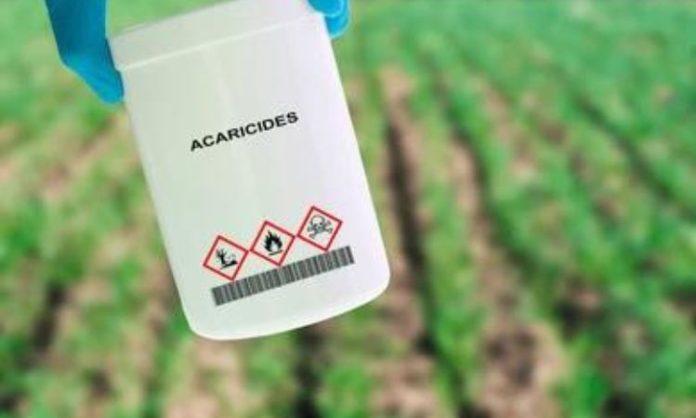The global acaricides market size is expected to grow in the forecast period of 2024-2032 at a CAGR of 5%. This signifies a burgeoning demand for acaricides, which are pesticides specifically designed to control mites and ticks. But what exactly are acaricides, and why are they so crucial?
Understanding Acaricides and Their Significance
Acaricides, also known as miticides, are an essential tool in safeguarding agricultural crops and animal health. Mites and ticks, though tiny, can inflict significant damage. They feed on plant sap, leading to stunted growth, reduced yields, and even crop failure. In the case of animals, mites and ticks can cause skin irritation, blood loss, and transmit diseases. Acaricides play a vital role in controlling these pests, protecting our food sources and ensuring the well-being of livestock.
Acaricides Market Overview: A Look at the Numbers
The global acaricides market is currently valued at over $300 million and is projected to reach over $400 million by 2032. This growth can be attributed to several key trends that are shaping the industry.
Market Trends: A Dynamic Landscape
Several factors are influencing the acaricides market:
- Growth of Agriculture and Livestock Industries: The ever-growing global population necessitates increased food production. This expansion in agriculture and animal husbandry fuels the demand for acaricides to protect crops and livestock from mite and tick infestations.
- Organic and Natural Acaricides Gaining Traction: Consumers are increasingly opting for organic produce and ethically sourced animal products. This trend translates to a rising demand for organic and naturally-derived acaricides that minimize environmental impact.
- Integrated Pest Management (IPM) on the Rise: The concept of IPM emphasizes a holistic approach to pest control, utilizing a combination of methods beyond just chemical pesticides. This includes the use of beneficial insects, crop rotation techniques, and targeted application of acaricides, leading to a more sustainable approach.
- Technological Advancements Drive Innovation: Research and development efforts are leading to the creation of new and more effective acaricides. This includes formulations with longer residual activity, improved selectivity to target specific pests while minimizing harm to beneficial insects, and acaricides with novel modes of action to combat resistance development in mites and ticks.
Market Drivers: Forces Propelling Growth
Several factors are propelling the growth of the acaricides market:
- Rising Prevalence of Vector-Borne Diseases: Mites and ticks can transmit a range of diseases to humans and animals, including Lyme disease, encephalitis, and babesiosis. The increasing incidence of these diseases emphasizes the need for effective acaricides to control the vector populations.
- Food Security Concerns: Ensuring sufficient food production to nourish a growing population is a global challenge. Acaricides play a crucial role in protecting crops from mite infestations, thereby contributing to food security efforts.
- Expansion of Commercial Agriculture and Animal Husbandry: The rise of large-scale commercial farms and intensive livestock operations necessitates the use of acaricides to maintain productivity and prevent widespread pest outbreaks.
- Government Initiatives: Governments around the world are implementing regulations and initiatives to control pest infestations. This often includes promoting the responsible use of acaricides to safeguard public health and agricultural yields.
Market Challenges: Hurdles to Overcome
Despite the positive outlook, the acaricides market faces several challenges:
- Development of Resistance in Mites and Ticks: The overuse or misuse of acaricides can lead to the development of resistance in mites and ticks. This necessitates the development of new acaricides with novel modes of action to stay ahead of resistance.
- Regulatory Restrictions and Approval Processes: The stringent regulatory environment for pesticide registration can hinder the introduction of new acaricides to the market. Streamlining these processes while maintaining safety standards is crucial for market growth.
- Environmental Concerns and Impact on Non-Target Organisms: The use of acaricides can have unintended consequences on the environment and beneficial organisms. Developing eco-friendly acaricides with minimal impact on non-target species is a key challenge.
- Competition from Alternative Pest Control Methods: The development of alternative pest control methods like biological control agents and biopesticides poses a competitive challenge to the acaricides market. However, these methods can be complementary, with integrated approaches offering the most sustainable solution.
Regional Analysis: A Global Market with Diverse Landscapes
The acaricides market exhibits variations across different regions:
- North America: A mature market with a focus on innovative acaricides and stringent regulations.
- Europe: Similar to North America, with a growing demand for organic and environmentally friendly acaricides.
- Asia Pacific: The fastest-growing market due to the expansion of agriculture and rising disposable incomes. However, concerns regarding regulatory frameworks and counterfeit products exist.
Competitive Landscape: A Fight for Market Share
The acaricides market is a competitive landscape with established players and emerging companies vying for market share. Some key players include BASF SE, Bayer CropScience AG, Dow Chemical Company, Syngenta International AG, and Sumitomo Chemical Co., Ltd. These companies are adopting various strategies to gain a competitive edge, such as:
- Product Development: Investing in research and development of new and improved acaricides with longer efficacy, better selectivity, and novel modes of action.
- Market Expansion: Entering new markets, particularly in high-growth regions like Asia Pacific and Latin America.
- Strategic Acquisitions and Partnerships: Collaborating with other companies to access new technologies, distribution channels, and expertise.
Recent mergers, acquisitions, and partnerships within the industry are further shaping the competitive landscape. Staying updated on these developments is crucial for understanding the market dynamics.
Future Outlook: A Glimpse into What Lies Ahead
The acaricides market holds immense potential for growth, driven by factors like:
- Growth Opportunities in Emerging Markets: The increasing demand for food and the expansion of agriculture in developing countries present significant growth opportunities for acaricides manufacturers.
- Potential for Innovation in Acaricide Formulation: Advancements in encapsulation technologies and formulations can lead to improved efficacy, longer shelf life, and targeted delivery of acaricides.
- Focus on Sustainability: The development of eco-friendly acaricides with minimal environmental impact and the integration of these products with IPM practices will be crucial for the future of the market.
